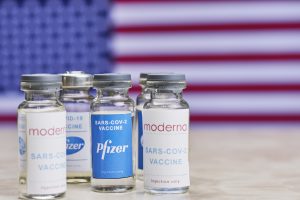Nelson Capital Management


The current U.S. Secretary of Health and Human Services, Alex Azar, has been quoted as saying that there will be enough doses of one or more vaccines against SARS CoV-2 and the disease that it causes, COVID-19, for all Americans by the spring of 2021 (March to early April). However, many medical and logistics experts believe that this is an exceptionally rosy forecast and that there are a significant number of potential issues that might slow the vaccine rollout and administration.
First, the drug makers must manufacture enough doses. This is not a trivial exercise, as making billions of doses of vaccines requires a huge amount of raw materials and equipment. Any glitches in the supply chain could slow down vaccine production. Vaccine logistics experts say that “wastage” of 1% to 10% of doses during production and distribution is common.
 Next, doses have to be transported to where medical personnel will be administering them. Both the Pfizer/BioNTech and Moderna vaccines must be kept cold during transport and storage prior to administration. The Pfizer/BioNTech vaccine in particular must be kept at a temperature of -70 degrees Celsius. This has set off a race to acquire special freezers for storage once the vaccine arrives at its destination.
Next, doses have to be transported to where medical personnel will be administering them. Both the Pfizer/BioNTech and Moderna vaccines must be kept cold during transport and storage prior to administration. The Pfizer/BioNTech vaccine in particular must be kept at a temperature of -70 degrees Celsius. This has set off a race to acquire special freezers for storage once the vaccine arrives at its destination.
Finally, there is the process of getting vaccines from the freezer into arms. Determining who to vaccinate first, second, third, etc. is already becoming controversial. There is also some confusion at the frontlines about when and which vaccines will arrive, how many doses will be available (and when), and how to cover staffing needs while workers get vaccinated. Vaccine administrators will also want to ensure that doses are not wasted once a package is opened. Some vaccines, including both Pfizer/BioNTech’s and Moderna’s, require two doses. Therefore, people receiving the initial dose need to be scheduled and reminded to return for the second at the appropriate time.
Based on current contracts with Pfizer/BioNTech and Moderna, there should be enough doses produced by the
end of the first quarter of 2021 to vaccinate 100 million people in the U.S. Moderna has recently contracted with the U.S. government for an additional 100 million doses to be delivered in the second quarter of 2021, which would be enough doses to vaccinate 50 million additional people. The hope is that Johnson & Johnson’s and AstraZeneca’s vaccines will be able to significantly supplement these numbers starting in the spring, but neither of these are yet approved in the U.S. and likely will not be until February at the earliest.
The development of not one, but multiple vaccines less than one year after SARS CoV-2 was genetically sequenced is an extraordinary scientific achievement. Mass vaccination will allow the world to return to normal over a period of months. However, we should not be surprised if it takes a bit longer to offer vaccination to everyone than is currently being projected. The complex logistics make mass vaccination a major undertaking and there will inevitably be some delays. That said, most experts believe that anyone in the U.S. who wants to receive a vaccine should be able to do so by late summer 2021.
Individual investment positions detailed in this post should not be construed as a recommendation to purchase or sell the security. Past performance is not necessarily a guide to future performance. There are risks involved in investing, including possible loss of principal. This information is provided for informational purposes only and does not constitute a recommendation for any investment strategy, security or product described herein. Employees and/or owners of Nelson Capital Management, LLC may have a position securities mentioned in this post. Please contact us for a complete list of portfolio holdings. For additional information please contact us at 650-322-4000.
Receive our next post in your inbox.